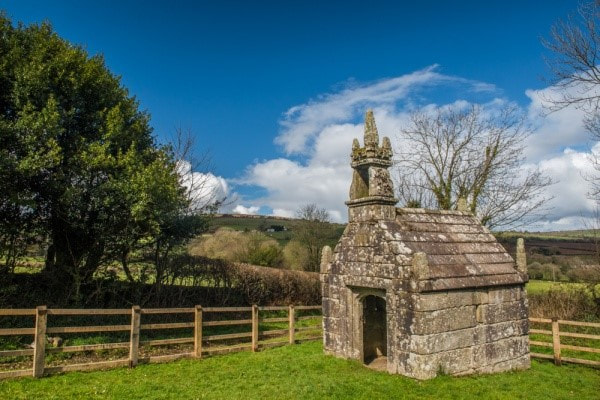|
Holy wells are a key feature in The Sacred Stones. There were once thousands of these sacred sites throughout the U.K. The natural springs were contained by stone structures built by pagans who believed that water had healing powers. Their steadfast popularity led the early Roman Church to embrace the watery temples, attributing the shrines to Christian saints in their drive to convert pagans. If that didn’t work, the sites were destroyed. This habit harkens back to Sterling Rosemont’s observation: What the Church couldn’t explain, it buried.
Most holy wells are small and subject to neglect, making an accurate count sketchy at best. It is often easier to spot the accompanying cloutie tree decked with cloth tokens and trinkets left by travelers who still hope for a touch of magic to heal the wounds they’ve gathered in life. Inspiration for The Sacred Stones sprung from a medieval holy well I visited while in Cornwall. The Dupath Well (as in Dean Dickie Dupath, one of our four seminarians) features a fascinating and unusually large structure over the sacred pool. This pre-Christian shrine still exists on a working farm. It captures the magic and mysticism embraced by Celts, Picts, and Romans seeking cures from holy water. Comments are closed.
|
Welcome!This blog is where I post my inspirations for each book in the Remy Lane Mystery series as well as behind-the-scenes tips, pics, and other tidbits. Feel free to click 'Read More' for in-depth posts. Archives
April 2024
Categories
All
|

 RSS Feed
RSS Feed